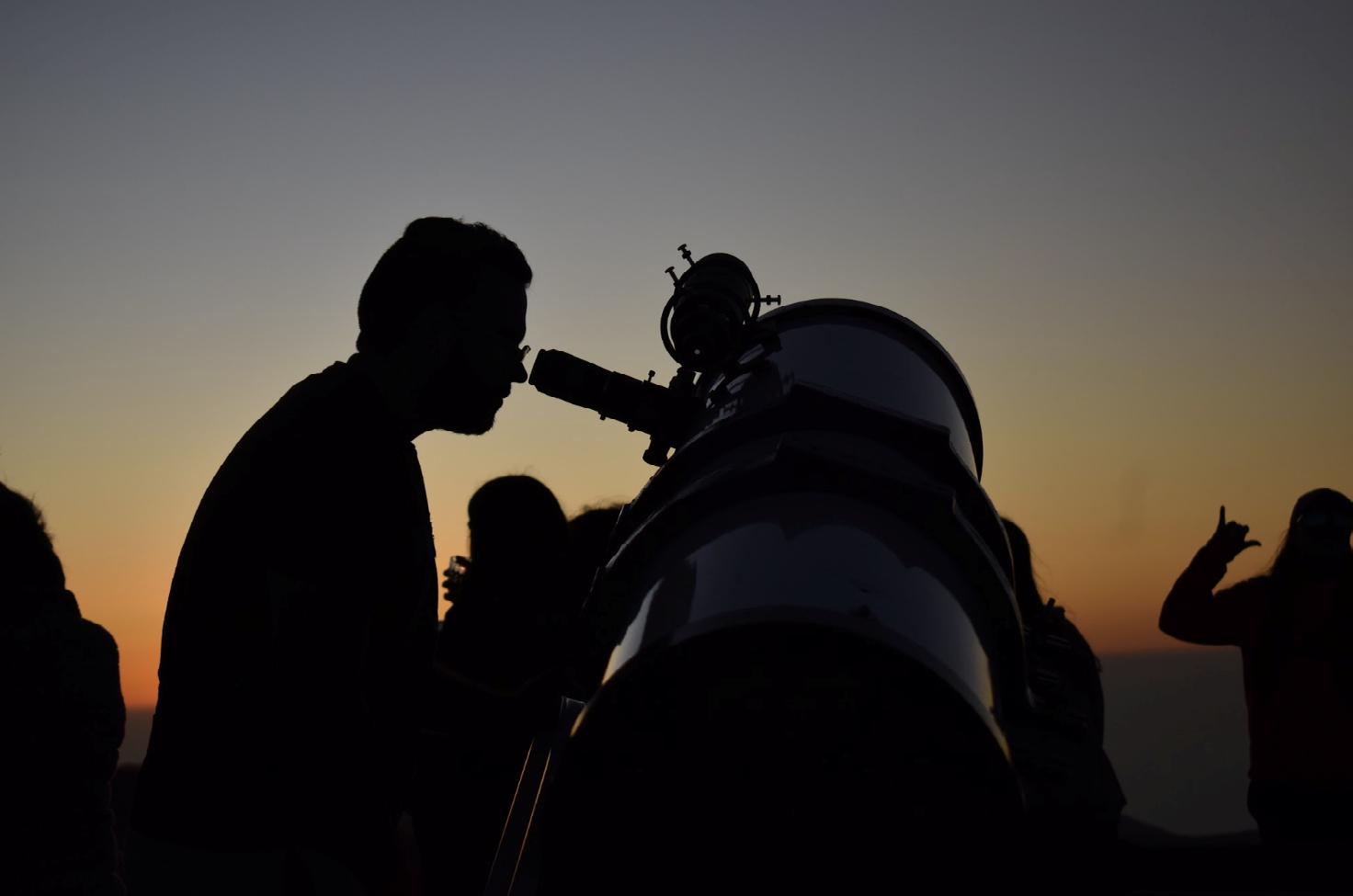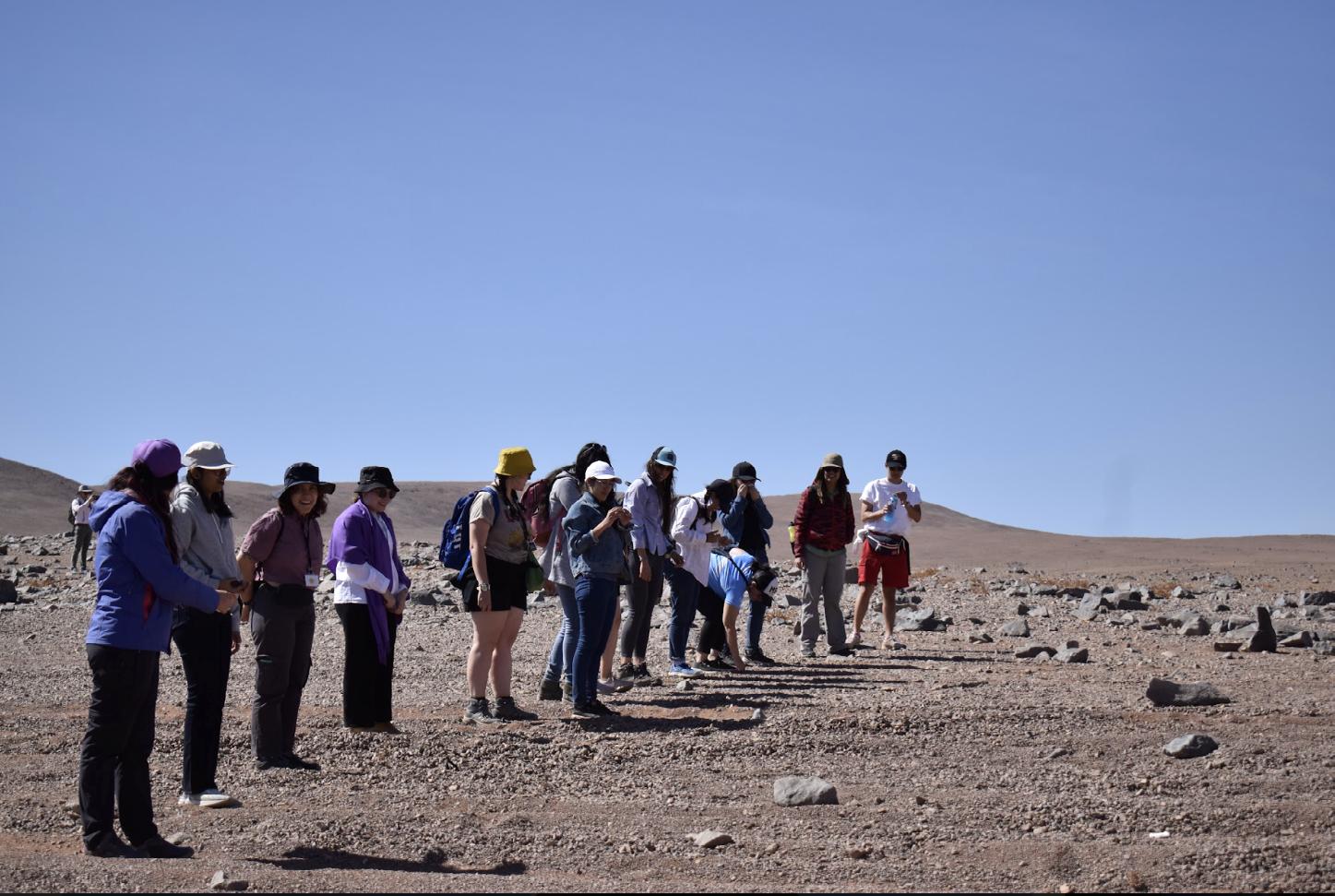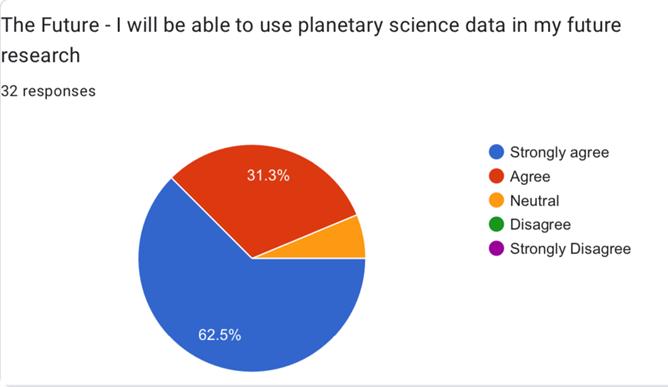
8 minute read
Meeting Report
Report on the COSPAR Capacity Building Workshop "Planetary Sciences Data Analysis"
[Carlos
Antofagasta, Chile, 16-27 January 2023
Gabriel, Chair of COSPAR Panel on Capacity Building]
The workshop took place at the Universidad Católica del Norte (UCN) in Antofagasta, the core of the Atacama Desert, from 16 to 27 January 2023. Organised mainly by COSPAR together with UCN, the University of Chile (Santiago de Chile) and the Uruguayan University of the Republic, it was supported by international organisations, such as the space agencies NASA and ESA and the European Southern Observatory (ESO). It was also sponsored by local organisations such as the Meteorological Society, the Centre for Astrophysics and Related Technologies (CATA), the Millennium Institute of Astrophysics and the Geological Society of Chile. The company L3Harris contributed by offering free IDL licenses for the students for 6 weeks.
The workshop was proposed and organised locally by Prof. Millarca Valenzuela from UCN, Prof. Gonzalo Tancred from the Universidad República del Uruguay who scientifically directed it, and Prof. Patricio Rojo (Universidad de Chile).
The aim of the workshop was to develop interesting scientific projects guided by experts from missions such as Hayabusa 2, Mars Express, JUNO, New Horizons and DART. This involved learning various analysis tools such as Spice, Small Body mapping Tool and programmes dedicated to the specific analysis of data from the different missions. Representatives from NASA’s Planetary Data System, JAXA’s Science Data Archive and ESA’s Planetary Science Archive assisted in the extraction and management of data from the various databases.
Details of the workshop can be found on the Capacity Building Programme pages (https://cosparhq.cnes.fr/Meetings/Workshops.html) and on the local website (http:// cospar.das.uchile.cl/).
Participants
A total of 37 candidates were selected out of a total of 101 candidates. The selected students were all, with one exception, from Latin American countries (11 from Chile, 9 from Brazil, 6 from Argentina, 3 from Uruguay, 3 from Mexico and 1 each from Bolivia, Colombia, Ecuador, Peru and Ja- pan). These workshops are defined as regional, for several reasons, including financial ones. A good candidate from a different region has to bear the costs of his or her participation. A couple of the originally chosen students had withdrawn their participation a few weeks before the event, but were easily replaced by other candidates. The limitation to 37 students was mainly due to financial reasons, the somewhat low local funding together with inflation especially related to flight costs forced us to be very conservative from the beginning.
The geographical distribution of the students showed a strong regional diversification. The gender distribution showed a 57/43% female/male student ratio, which is quite typical considering the workshops previously organised in this region.
Lecturers
For most of the speakers/supervisors this was their first participation in a COSPAR Capacity Building Workshop (CBW), most of them were sent by the space missions we have consulted. Juno, a NASA space probe orbiting Jupiter, sent 4 mission specialists: Scott Bolton, Jack Connerney, Steven Levin and Frederic Allegrini; New Horizons, NASA’s mission to the Pluto system and beyond sent Simon Porter, a postdoctoral researcher. Another postdoctoral researcher, Terik Dalik, represented the DART mission, Double Asteroid Redirection Test, a planetary defence mission that successfully collided in September 2022 with the small asteroid Dimorphos, changing its orbit. Another specialist on small solar system bodies, James «Gerbs» Bauer, spoke mainly on the PSA and PDS planetary data science systems. JAXA’s Hayabusa 1 and 2 missions were represented by Sergi Sugita. Lucie Riu, ESA research fellow, was the Mars Express specialist and a very active project supervisor. The team of supervisors was completed by Javier Suarez from Jacobs University Bremen (Germany), another Mars Express specialist. All of them participated for the first time in a COSPAR CBW. However, the scientific
"The aim of the workshop was to develop interesting scientific projects guided by experts from missions such as Hayabusa 2, Mars Express, JUNO, New Horizons and DART" leadership was in the hands of a Uruguayan professor with COSPAR CBW experience who had led previous planetary science workshops in Montevideo, Uruguay, in 2007 and Guaratinguetá, Brazil, in 2015. Several presentations on future planetary missions from both ESA and NASA were made online (a first for COSPAR CBW).




The Programme
The school was structured with approximately 43% of the time devoted to science lessons, 13% to lessons on data analysis software and 43% to the projects that the students had to carry out (a bit misleading because the students usually work long hours, especially in the second week). As in the past, most of the teachers also acted as project supervisors.
For the first time all the presentations could be followed online via Zoom, and we also used it to record them. Together with all the material used, the files of the presentations, including those made by the students at the end of the workshop, are available on this Google drive.
The projects
The students defined their projects together with the supervisors, and decided at that point to work individually or in small groups. A division was made to assign supervisors according to the chosen topics. The number of supervisors was perhaps too small on this occasion, with only four supervisors present in the second week (L. Riu, T. Daly, S. Porter and J. Suárez), although on-line help was also available.
Unlike other astronomy workshops held in the last 10 years, in which practically all students worked on their projects using their own laptops, in this case we had few students, six in total (17%) using the desktop computers provided. The desktops we had at our disposal (40, a very large number) were equipped with Windows as their operating system. Although it was possible to install most of the software to be used on them, this took some time and some students were not used to using Windows.
The inclusion of IDEA
This workshop presented novelties not only with respect to the introduction of online classes (in the post-COVID19 era this is truly accessible) but also introduced a segment dedicated to discussion on inclusion, diversity, equity and accessibility (IDEA), in line with COSPAR’s decision to incorporate in its strategic plan a call to action to define a roadmap to achieve this across the organisation.
An obvious communication problem between the local organisers, scientists and the IDEA team led to a lack of clarity on whether the 90 minutes should be a round table including students, or a panel discussion, or something in between. The result was interesting presentations by the four women on the panel and only at the end were students invited to comment. This format was totally outside the expectations of the students, who evidently, according to the comments obtained in the final evaluation, considered IDEA in general as a very valuable element, but expected a discussion on the problems they face in their respective countries, both professionally and socially, and not what was done.
Inclusion of IDEA
The experience, although negative in important aspects, can tell us a lot about what to change and improve for future events. We hope to include aspects of IDEA in all training workshops we organise.
The excursion
The excursion was undoubtedly one of the highlights of the stay. We went to visit ESO’s Paranal site with the impressive Very Large Telescopes (VLT), about 130 km from Antofagasta. A large bus and a minivan took us all to combine this visit with a field trip to learn how to search for meteorites in the desert.
In the total area we scanned for meteorites we would expect an average of 1.5 meteorites. One candidate was found, which has been left at UCN for analysis.
After these visits we headed to the Mano del Desierto, halfway back to the city of Antofagasta, a much visited monument (to experience a combination of art and strong desert wind!) to finally reach a plain at an altitude of 1,700 m near El Cobre, which is a formidable platform for observing perhaps the best sky on Earth.
There were several telescopes with solar filters brought by UCN staff for pre-sunset observations. As night fell and, in the darkness, we enjoyed an exceptional seafood catering complemented by pisco sour and good Chilean wines. Fruit juices were also available. We enjoyed a sensational night, under a sky with a new moon (they had also prepared it, evidently) in which we observed planets, constellations, a milky way that seemed to fall on us, we clearly saw clusters of stars and the Magellanic clouds. We were back at the hotel at 23:30 with the impression that it had been a truly unforgettable experience.
General evaluation
As anticipated in several points, we have prepared and distributed among the students an evaluation sheet to obtain feedback on the different aspects of the workshop, obtaining so far 33 evaluation sheets answered (> 80 %). In ge- neral terms, the results do not differ much from those obtained in previous workshops in Latin America. As always, with regard to local elements (place, food) opinions differ partly, as is to be expected due to the very different conditions.


A notable difference from previous evaluations is the level of satisfaction with financial support, which is much lower than in the past. The general increase in workshop-related costs, especially flight costs, has forced us to reduce the percentage of subsidised travel expenses. In the past, this percentage ranged from 70% to 80% of the price of an economy ticket. This time we have been forced to reduce it to an average of 55%. This, together with the rising cost of flights in general, and the economic situation in a large number of Latin American countries with very weak currencies, has led to a low level of student satisfaction (and also to an increase in students’ efforts to cover these costs themselves. It should be clarified, however, that we did not have any refusal of the invitation to participate for financial reasons). There is a high level of satisfaction with the workshop in general, also with the teachers and supervisors. The hard work done by the latter in helping with data reduction and analysis is especially rewarded with more than 90% agreement (of which almost 70% is «strong»). We have however noticed, that in the midst of this general satisfaction, there is a noticeable minority who express negatively about the aid received. Two written comments clarify this situation: the group that chose to work with Juno data as a project felt abandoned during the second week, as all members of that project had to return to the USA for an important project meeting.

A large majority of participants believe they will be able to use planetary science data in their future research, demonstrating a high level of confidence, and almost two-thirds believe they will be able to do so without much additional help (Figs. 15)

Almost unanimously, the students feel that they have benefited significantly from their attendance at the workshop (see figure 16). This very high level of satisfaction does not differ much from previous workshops, which is always very comforting for us, organisers, teachers and supervisors. That this is not just a product of participants trying to please us is shown by the fact that they give critical opinions regarding some other aspects of the workshop, such as the financial support for travel, or the comments received regarding the two hours devoted to inclusion in IDEA, both discussed earlier in this report. The importance of this issue for Latin American students is reflected on the one hand in the high level of agreement with it, but also in the large number of written comments (with 25 being the most commented point of the evaluation). The fact that they are mostly negative about its implementation should not discourage us, but rather reinforce and motivate us to do better.

I would like to thank first of all Prof. Gonzalo Tancredi, the scientific leader and inspiration for this workshop, who together with Prof. Millarca Valenzuela, Prof. Patricio Rojo and the entire local organising committee made the event possible. For the work and dedication also to all the speakers. Thanks also on behalf of COSPAR to the institutions that have contributed substantially to it : Universidad Católica del Norte, Universidad de Chile, Universidad de la República del Uruguay, NASA, ESA, the local sponsors Centro de Astrofísica y Tecnológica Afines, Instituto Milenio de Astrofiísica, Sociedad Meteorológica and Sociedad Geológica de Chile, as well as the European Southern Observatory ESO and the company L3Harris, and the missions Juno, New Horizons, DART, Hayabusa I and II, Mars Express and Bepi Colombo.
I have learned enough to do this without much extra help.
32 responses
32 responses
I have benefitted significantly from attending the workshop.
33 responses





